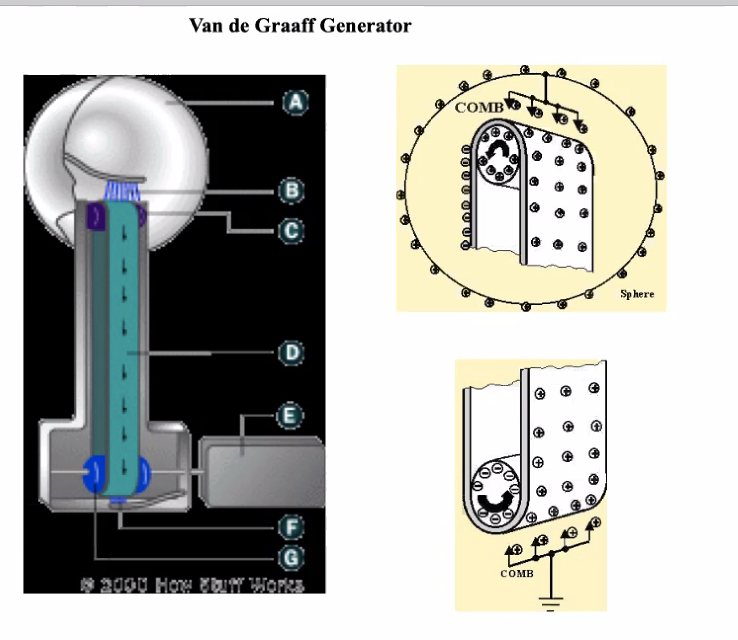1 A Van De Graff Generator

Figure 1: Screen Shot 2020-09-09 at 10.25.51 AM.png
1.1 Basic Procedures
- User turns crank
- User brings handle to the globe
- Electrostatic Bang!
1.2 But, how does it work?
- Cranks connects to a white roller, and next to it some metal teeth
- Roller connnects to transparent belt, and on the other end, under the globe, there is a similar roller
- Metal combs next to rollers
- When cranks are turned, the bottom roller becomes negative, and the top roller becomes positive
- So, electron flow between handle (connected to bottom) and globe (connected to top)
1.3 Why Van de Graff is so exciting
Van de graff generator so exciting because, unlike normal statics, charges are added from the inside (see, wire B from the figure)
- When you add additional changes, because conductor wants to stay 0, the additional charges can't do anything but accept it
- Sphere slightly curved to make up for gaping hole
- Normal door-handle statics would much rater simply eject the added change as their electric field is pointed at one direction against charge introduction
1.4 Why are there sparks through the air?
- One dome that's positive, one dome is negative
- So, what happens when Spark! happens?
- Enough charge to overcome the electric field resistance KBhPHYS201ResistanceConductivity of air (like 3.4 million Volts/metre), and air ionizes — air atoms becomes so attracted that their electrons ditch their nuclei and air suddenly becomes a conductors
- Neutral air has high resistance, but when it ionizes, the air looses its resistance (drops) and becomes nicely conductive
- So then, current (Coulomb/s) that flow in the air suddenly spark up because of sudden loss of resistance, discharging the negative dom